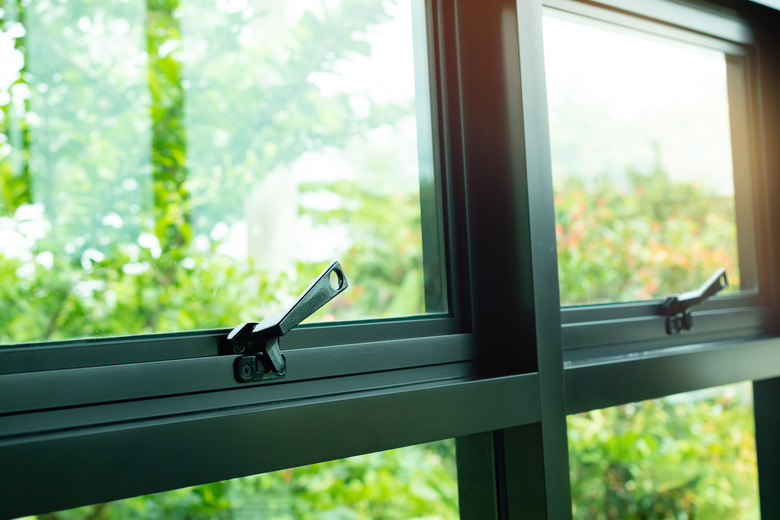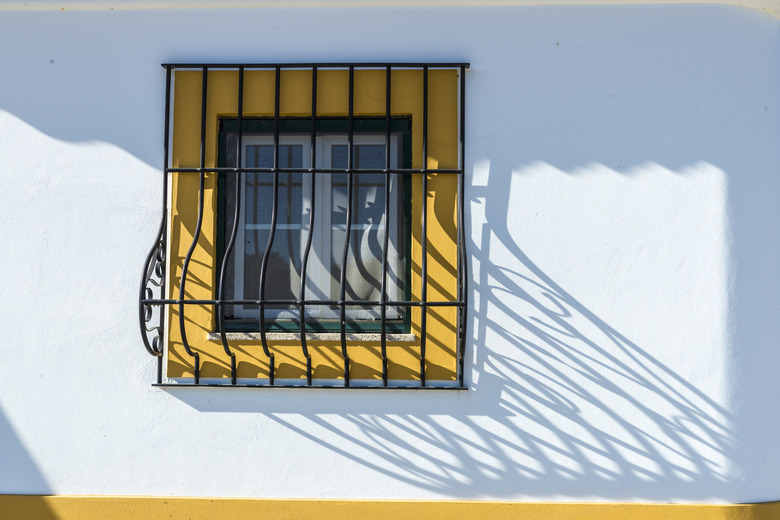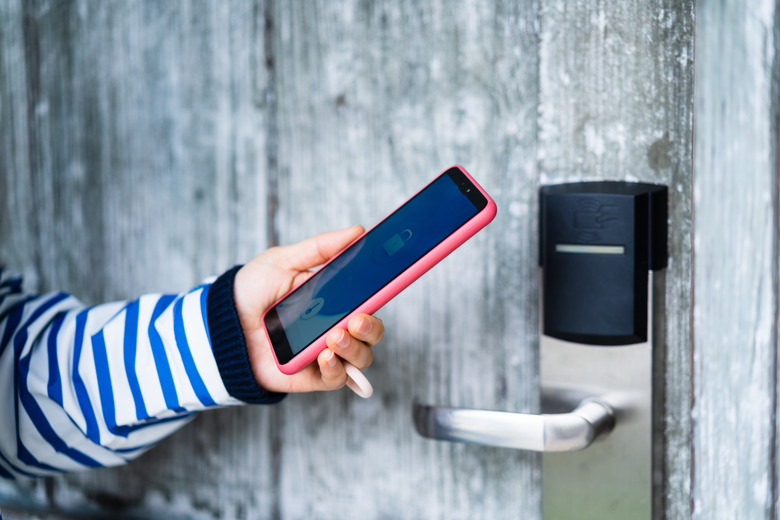8 Tips For Burglar-Proofing Your Windows And Doors
We may receive a commission on purchases made from links.
Most people would agree that taking steps for burglar-proofing a home is a no-brainer. Everyone wants to feel safe and know that family members are safe from outside intruders. This is especially true when you realize there are a number of small and often inexpensive steps a homeowner can take to keep the bad guys out beyond employing an (often expensive) home security system.
Unfortunately, some people don't act until after the fact, when they've been robbed or have come close to being robbed. That's when they look for products to keep their home safe to gain some peace of mind. However, you can be proactive and help prevent a robbery by burglar-proofing your home.
1. Develop a Burglar-Proofing Checklist
1. Develop a Burglar-Proofing Checklist
Make a list of the different types of windows and doors in your house and how they may be susceptible to a break-in. Check inside and out, making note of those that do not close completely. Sometimes paint buildup, wear and tear and swelling due to the weather can keep a window from closing completely. That little opening may be enough to allow a burglar to force open the window. Start burglar-proofing by first fixing those structural problems.
Also make note of windows that are hidden from view from the street or a neighbor's house because of overgrown shrubs and other plants. Trim back bushes so that they cannot conceal someone who is trying to open a window from outside.
Consider your burglar-proofing techniques for your doors and windows as part of an overall home security plan. Your plan might also include landscape lighting that not only adds interest and allows you to use your property after dark but can also play a part in home safety. While high-wattage floodlights may be appropriate in some cases, any type of lighting, including decorative lighting, can help deter burglars.
If having additional burglar-proofing on your doors and windows still doesn't feel like enough, another layer of home security may be adding security cameras around the house. Some are relatively inexpensive and easy to install. Another option is, of course, to hire a home security firm to monitor your home.
2. Upgrade Window Locks
2. Upgrade Window Locks
There are a variety of lock upgrades available when you're looking to burglar proof windows. Be sure that the lock you select is designed to work with the material from which your windows are made (wood, vinyl, aluminum or composite). It is also a good idea to check on whether any burglar-proofing changes you make to the original window will affect the window's warranty if it still applies.
Windows come with some kind of locking mechanism, but in many cases, the locks are good at holding the windows shut but are easy to jimmy open. On double-hung windows — the kind where an upper and lower sash both slide up and down in channels — the lock or locks are located where the upper and lower sashes overlap. You can lock or unlock the windows by hand.
You can supplement standard locks by installing one that requires a key to operate. You simply remove the old center lock if you have one and install the new lock in its place. Be careful when drilling through window sashes so you don't drill into the glass. Once the locks are installed, you will need to keep the key near the window. Be aware, however, that stopping to unlock the window will slow you down if you need to exit the room in an emergency.
Another way to keep the window from being forced open is to install a window-blocking device. These products are installed in the window channel above the lower sash. Some are adjustable so that the window can remain completely closed or partially open.
Lastly, pinning is the process of connecting the upper and lower sash so that they can't move. In its simplest form, you drill a hole through the top of the lower sash and the bottom of the upper. Then, you insert a thick nail or a bolt into the hole. Drilling additional holes in the side of the upper sash allows for partial opening of the window. You can also buy decorative pin locks for sliding doors.
3. Upgrade Casement and Slider Locks
3. Upgrade Casement and Slider Locks
On the whole, casement windows are fairly secure as long as they close tightly. They have to be opened with a crank, and the locking mechanism is hidden when the window is shut. You can, however, add an extra layer of protection by installing a window latch on the window. You attach the latch part to the window frame and the latch holder on the framing around the window.
Beef up the security on sliding windows and doors by blocking the track on which they slide. This could be anything from a piece of 2x4 lumber to an adjustable rod made for the purpose. It is impossible to open the door while the rod is in place.
There are a number of different lock styles for sliders. Some are simply installed in the track and are manipulated with a thumb screw so that the lock can be set at different positions. Loop locks are attached to the framing around the door or window and the frame of the door or window. Pin locks are steel pins that are inserted into a hole drilled through the door or window frames where they overlap one another.
A keyed slider lock is usually attached to the edge of the moveable part of the door or window at the top or the bottom. The pin slides into a hole in the frame. Be sure to keep the keys to the lock nearby.
4. Install Security Bars
4. Install Security Bars
While some burglars may try to disable a window lock, many will simply break the glass to gain entry. One way to stop such crimes is to install window security bars — this strategy won't work on every home, but it is an option. Some decorative bars that feature scrolling and other designs can be purchased in a number of sizes, or a metal shop can custom-fabricate bars. In most cases, the bars are attached to the exterior of the house.
While security bars can prevent a break-in, they also prevent someone from getting out of the house in an emergency. Building codes have egress requirements that provide for a means of escape to the outside in case of fire or some other emergency. Check with your local building department before installing security bars. Windows intended for emergency egress can be fitted with operable (hinged) security bars that can be opened from the inside. These are often labeled as "egress compliant."
There are also security gates that can be installed on the inside of the window. Many of these are marketed as safety measures to keep children from falling out of the window. Some have quick-release mechanisms so that they can be opened from the inside.
5. Install Window Films
5. Install Window Films
One way to stymie the smash-and-grab burglar who will break a window to get at your stuff is to install security window films on the inside of the window. These clear polyester films reinforce the glass and form a surprisingly strong barrier. The films may not stop an intruder who has time to keep pounding on the glass, but it will slow him. Sometimes, that is enough to discourage a would-be burglar.
The films range in thickness from 4 mils to 14 mils. Generally, the thicker the film, the more protection it offers. Most DIY products already have the adhesive attached. You use a squeegee to smooth the film in place. Careful installation is important, or the finished job may look messy. Some film manufacturers require that their products be installed by a qualified installer.
Films have other benefits in addition to increased security. They can reduce heat transmission from outside as well as reduce ultraviolet radiation from the sun. UV light contributes to the fading of furniture, flooring and window treatments.
6. Install Laminated Glass Windows
6. Install Laminated Glass Windows
Applying a film to an existing window is a retrofit option, but if you are buying new windows, consider products with laminated glass for security. Standard window glass shatters into sharp shards when broken; tempered glass, which is pre-stressed through heating and sudden cooling, breaks into small pieces. Laminated glass consists of a vinyl-type film (polyvinyl butyral) sandwiched between two layers of glass.
The interior layer will keep the glass in place should someone try to break the window. It's the type of glass used in car windshields. Laminate glass is available on double glazed windows.
Most of the major window manufacturers offer laminated glass products, but they tend to market them to customers in high wind areas, such as along the coast. Laminated glass not only protects against break-ins but it also protects against damage from high winds. So, you may have to search for this type of product if you don't live in a high-wind area.
7. Strengthen Door Locks
7. Strengthen Door Locks
Doors are another possible entry point for burglars. At the very least, both front entry doors and back doors should be equipped with deadbolt locks. Unlike a latch lock that is part of a doorknob, a deadbolt is operated by a key on the outside and a turn knob on the inside. It is longer and stronger than the average knob lock, extending further into the door frame. Many front entries have both types of locks.
Because the framing around doors, especially prehung doors, tends to be thin, many experts recommend upgrading existing deadbolt locks by replacing the short screws on the strike plate — the metal piece attached to the door jamb — that came with the lock with longer 3-inch screws. The longer screws will help secure the lock to the house framing.
There are many types of locks available, especially front door locks. There's the standard cylinder that is locked and unlocked with a key, those that operate by a keypad and smart locks that you can control with your cellphone. Newer models have more features than the old standby, but they are not necessarily more secure.
To help make a choice, the American National Standards Institute and the Builders Hardware Manufacturers Association have developed standards for locks based on longevity, toughness and the length of the latch or bolt. Grades are from one to three, with one being the highest quality.
8. Strengthen the Entryway
8. Strengthen the Entryway
Security films can strengthen glass on doors and door sidelights. Another option is to install a two-cylinder lock, which is a lock that requires a key on both sides of the door in order to operate. So, if a burglar breaks the glass on the door, he still won't be able to unlock the lock. Be sure to keep the key near the door but out of reach from the door glass. This ensures anyone inside won't become locked in, and a burglar who breaks the glass won't be able to reach the key from outside.
Finding pickproof, strong locks is important, but unless you are being targeted by a jewel thief from the French Riviera, the thief is not going to try to pick the lock. Unfortunately, the preferred method for forcible entry is to kick in the door. The areas around the lockset and the hinges are the weakest points on the door.
There are products that strengthen the doorjamb. These have a metal strip that gets attached to the jamb, covers for the lockset and strike plate and covers for the hinges. All that metal beefs up the framing around the door, making it difficult to force open the door.


